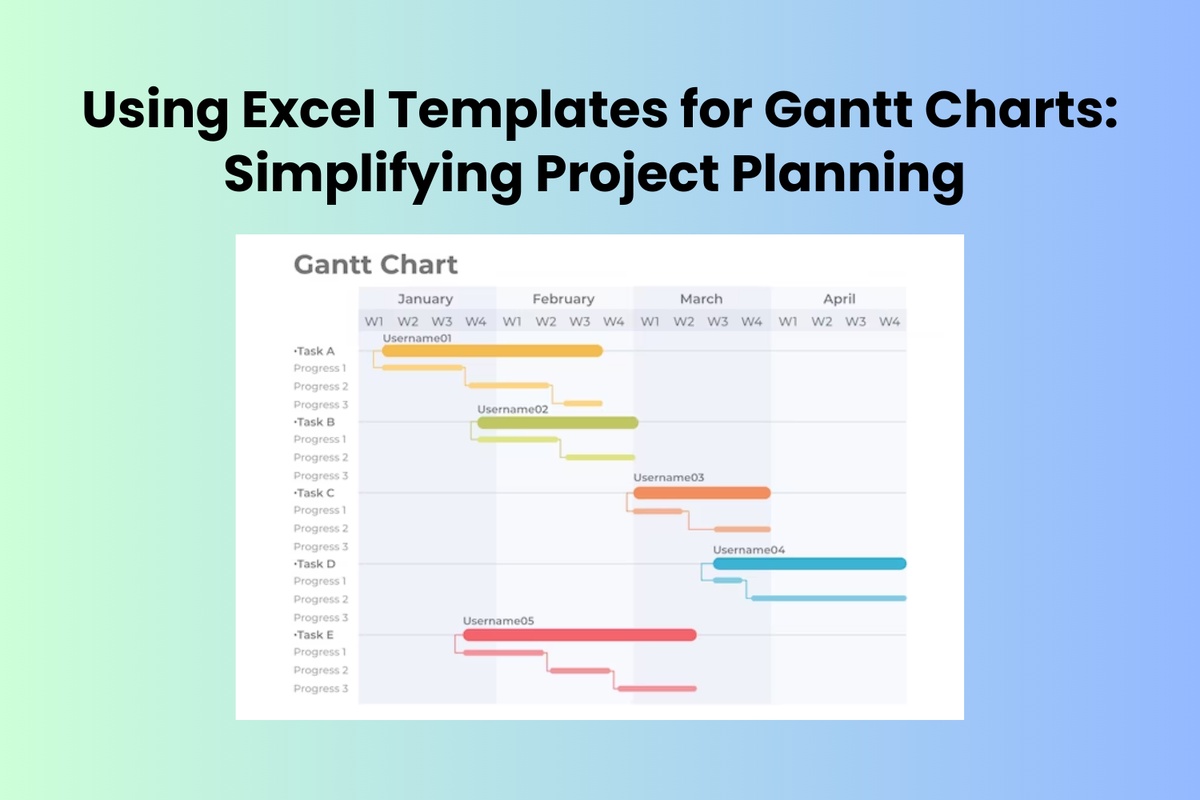In project management, a Gantt chart stands as a fundamental tool, serving as a visual representation of a project schedule. It provides a comprehensive view of tasks, their durations, dependencies, and progress. While several software options exist for creating Gantt charts, utilizing Excel templates remains a popular choice due to its accessibility and familiarity among users. In this article, we will explore the advantages and effectiveness of using Gantt chart templates in Excel for simplifying project planning.
Understanding Gantt Charts
Before delving into the realm of Excel templates, it's crucial to understand the essence of Gantt charts. Developed by Henry Gantt in the early 20th century, these charts offer a timeline view of project tasks, displaying their start and end dates and their respective durations. The visual layout enables project managers and team members to grasp project progress, deadlines, and task interdependencies at a glance.
Benefits of Gantt Charts in Excel
Excel, a widely used spreadsheet application, offers a simple yet powerful platform for creating Gantt charts. Leveraging Gantt Chart in Excel gives you several benefits:
Accessibility and Familiarity
Most professionals are already acquainted with Excel, making it an easily accessible platform for creating Gantt charts. The familiar interface reduces the learning curve, enabling users to quickly start planning and managing projects without the need for extensive training.
Customization Options
Excel templates for Gantt charts allow for extensive customization. Users can personalize the chart layout, color schemes, and task details to suit their project requirements. This flexibility ensures that the Gantt chart aligns perfectly with the project's specific needs.
Cost-Efficiency
Excel is often readily available within many organizations, eliminating the need to invest in specialized project management software. This cost-effectiveness makes Excel an attractive option for smaller businesses or individual project managers with budget constraints.
Seamless Integration
Excel allows for seamless integration with other Microsoft Office applications and external tools. This integration facilitates data import/export, collaboration, and sharing across different platforms, streamlining project communication and coordination.
Versatility
The versatility of Excel templates enables users to create Gantt charts for projects of varying complexities. Whether managing a simple task list or a multifaceted project with numerous dependencies, Excel can accommodate and visualize the project timeline effectively.
Using Gantt Chart in Excel Templates
Creating a Gantt chart in Excel involves utilizing pre-designed templates or building one from scratch. However, employing templates offers a quick and efficient way to kickstart the project planning process. Here’s a step-by-step guide to using Gantt chart templates in Excel:
Step 1: Accessing Excel Templates
Excel offers various Gantt chart templates through its template library. Users can access these templates by navigating to the "File" tab, selecting "New," and searching for "Gantt chart" in the search bar. Alternatively, online repositories and project management websites often provide downloadable Excel Gantt chart templates.
Step 2: Customizing the Template
Once the desired template is selected or downloaded, users can start customizing it to fit their project requirements. Tasks can be added, modified, or removed, and their respective durations and dependencies adjusted. The timeline can also be adjusted to reflect the project's start and end dates.
Step 3: Adding Task Details and Dependencies
Entering task details such as task names, start dates, durations, and dependencies is crucial for an accurate representation of the project schedule. Excel allows users to input this information directly into the template, and the Gantt chart updates dynamically based on the data provided.
Step 4: Formatting and Styling
To enhance clarity and visual appeal, users can format and style the Gantt chart by changing colors, adding labels, and adjusting the layout. This step enables better readability and comprehension of the project timeline for all stakeholders involved.
Step 5: Tracking Progress
As the project progresses, users can update the Gantt chart in Excel to reflect the actual status of tasks. This involves marking completed tasks, adjusting timelines for delays, and visualizing the current project status accurately.
Conclusion
Gantt charts play a pivotal role in effective project management, providing a visual roadmap that simplifies planning, execution, and tracking of tasks. Excel's user-friendly interface and customizable templates make it a convenient and powerful tool for creating Gantt charts, aiding project managers and teams in organizing and managing projects efficiently. Utilizing Excel templates for Gantt charts streamlines the project planning process, allowing for better visualization and control of project timelines and milestones. By employing these strategies, project managers can harness the power of Excel templates for Gantt charts to enhance their project planning and management capabilities, ultimately leading to greater project success.


No comments yet